We explain what a desert is, and discuss its classification and climates. In addition, we explore its characteristics, flora and fauna, and more.
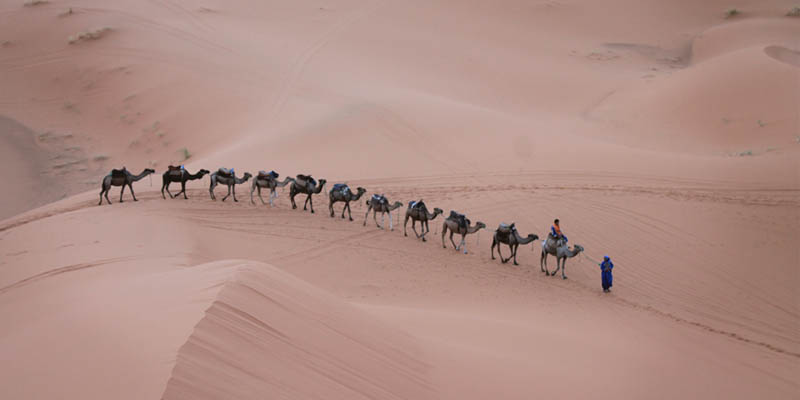
What is a desert?
A desert is an ecoregion typically found on Earth's surface. It is characterized by extremely low precipitation levels and sparse fauna and flora. Although the traditional image of a sandy desert is associated with warm, equatorial climates, desert areas also exist in temperate and cold regions.
Deserts mainly occur as a result of a lack of rainfall. Among the factors that account for the lack of rain are the desert's location far from sources of moisture, dry air preventing the formation of clouds and precipitation, the presence of mountains blocking humid air, and even climate change, which contributes to the desertification of certain environments.
- See also: Sandstorms
How much of Earth’s surface is covered with deserts?
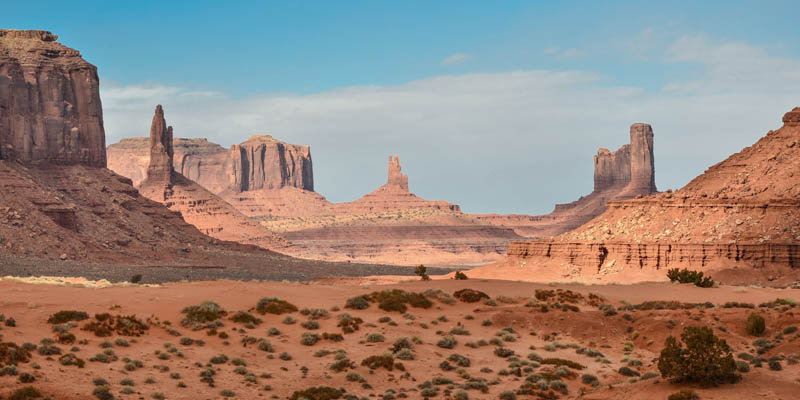
Deserts cover nearly one-third of Earth's surface, which amounts to about 19.3 million sq mi (50 million km2). Most deserts are found in warm climate zones, with the remainder in cold and polar regions.
Deserts occur on every continent. The largest desert regions include the Sahara in North Africa, the Arabian Peninsula, the deserts in Central Asia, and Patagonia in Chile and Argentina.
Desert climates
Three climate zones that are home to deserts can be identified based on the average annual precipitation they receive:
- Semi-arid zones. With an average annual precipitation of 10 to 20 inches (250 to 500 mm), they cover 15% of Earth's surface. They are located on the boundaries of deserts and are called "transition zones" or "ecotone zones".
- Arid zones. They receive an average annual rainfall of less than 10 inches (250 mm). They cover 16% of Earth's surface, making them the largest type of desert in the world.
- Hyper-arid zones. Several years may pass without any precipitation in these zones. The annual average precipitation level is less than 2 inches (50 mm). They account for just 4 % of the Earth's surface, and are found mainly in the Atacama region in Chile, the Mojave Desert in the United States, and the Danakil region in Ethiopia.
Temperatures in these zones tend to be extreme, with significant thermal amplitude between day and night. Desert temperatures can reach highs of 104 °F (40 °C) during the day and drop below freezing during nights.
Types of deserts

Based on their geographical location and prevailing climate pattern, deserts can be classified into:
- Tropical deserts. These are the largest deserts in the world, located between the tropics of Cancer and Capricorn. They are influenced by the trade winds, which prevent the formation of clouds and rain while maximizing the solar radiation received by the ground. The most important are the Sahara and the Kalahari deserts.
- Midlatitude deserts. Also known as "continental deserts", they occur within the continental interior, far from the moisture of oceans. The Sonoran Desert in Mexico is a typical example of this type of desert.
- Rain shadow deserts. They occur as a result of the action of large mountain barriers blocking the flow of moist air. The Mojave Desert in the United States and the Judean Desert in Israel are examples of this type of desert.
- Coastal deserts. Located on the edges of continents, these deserts are influenced by complex wind systems that prevent the formation of clouds and precipitation. The Atacama Desert in Chile, the driest desert in the world, falls into this category.
- Monsoon deserts. This type of deserts are caused by the action of monsoons (a seasonal wind system), which develop in the ocean and lose their moisture as they move inland. In monsoon deserts, there is virtually no precipitation during the winter, while during the summer, the humidity monsoons carry is discharged near coastal areas, with inland areas receiving very little precipitation. The Thar Desert in Pakistan is an example of this type of desert.
- Cold deserts. They are found in high-altitude regions with prevailing arid and rocky soils. The Andean Puna, at over 13,125 ft (4,000 m) above sea level, is the most important cold desert in South America.
- Polar deserts. With temperatures below the freezing point of water, they are expanses of ice (and snow, in some cases) that receive very low annual precipitation, and are found in polar and Antarctic regions. The driest areas in Antarctica and Greenland are considered polar deserts.
It is important to note that while these classification help organize information, some deserts may fall into more than one category. For example, the Atacama Desert is a coastal desert due to its proximity to the Pacific Ocean, while at the same time, it is a rain shadow desert because the Andes Mountains prevent moist winds from the Atlantic Ocean from reaching it.
Desert soils
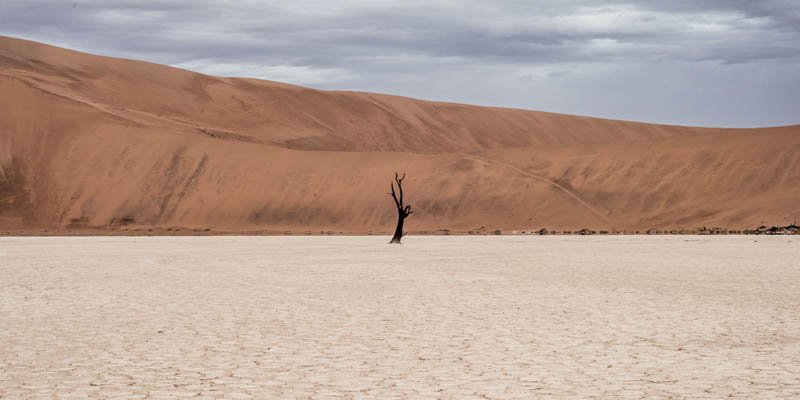
Deserts typically show three different types of soil:
- Sandy soils. They are composed mainly of small, granular sand particles. As sand grains do not adhere to each other, they are easily transported by the wind, which may cause large dunes to form.
- Rocky or stony soils. They are made up of rocks and stones of various sizes.
- Ice-covered soils. In polar deserts, the surface is entirely covered by ice, so the ground often lies several miles below the frozen layer.
Desert flora

Desert vegetation is very sparse due to low levels of moisture in the soil and air. Existing vegetation develops adaptations to resist these conditions including small, spiny leaves or long roots to make best use of the scarce water available.
The presence of water in oases, in contrast, sustains a great variety of plant life, including larger trees and shrubs. An oasis is an area of fertile, moist soil in the middle of a desert. In these places, groundwater reaches the surface or is close to it, making plant and animal life possible. The flora in an oasis can be very diverse, featuring palm trees, thorny bushes, cacti, and a variety of grasses and pastures.
Desert fauna
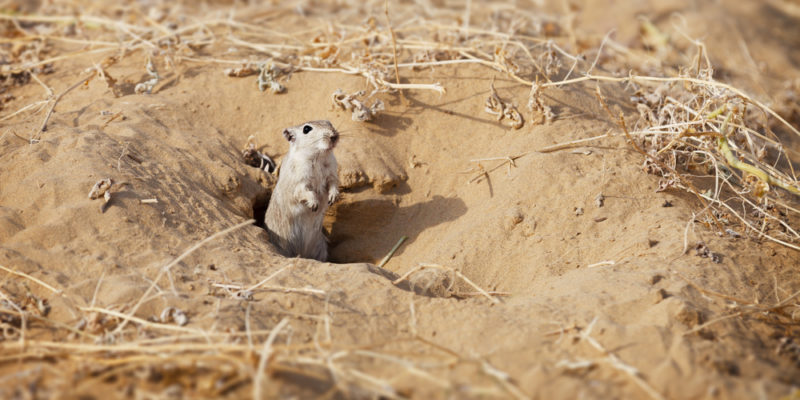
Desert fauna is diverse, and has developed a series of adaptations to survive with little water and extreme temperatures. Some typical desert animals include:
- Reptiles such as snakes, lizards, and iguanas. They have scales or thick skin to prevent water loss and be able to live for long periods without water.
- Birds including eagles, owls, and falcons. Most of them are migratory species which only dwell in the desert during certain periods of the year.
- Mammals like camels, mice, foxes, and coyotes. They are usually more active during the night to avoid the daytime heat.
- Insects such as ants, beetles, spiders, and scorpions. They often have hard shells to prevent water loss, and to store it in their bodies.
Natural resources in deserts
Deserts are home to a wide variety of mineral resources that vary with the geographical location and geological origin of each desert. Among the most typical resources found in deserts are minerals such as gold, zinc, potassium, salt and silver, and hydrocarbons such as oil and natural gas.
In addition, deserts are ideal for the production of renewable energies, such as wind and solar power
Oases and river areas are used by the local communities for agriculture.
Some deserts are also exploited for tourism due to their natural beauty and the possibility of activities such as hiking.
Largest deserts in the world
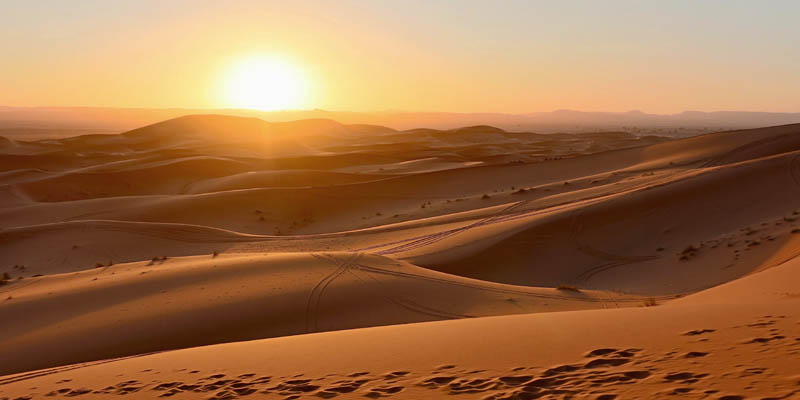
The largest desert in the world are:
- Antarctic Polar Desert: with over 5.4 million sq mi (14 million km2).
- Arctic Polar Desert: with over 5 million sq mi (13 million km2).
- Sahara Desert in North Africa: with over 3.5 million sq mi (9.1 km2).
- Australian Desert: with nearly 900,000 sq mi (2.33 million km2).
- Arabian Desert: with 888,000 sq mi (2.3 million km2).
- Kalahari Desert in Southern Africa: with 360,000 sq mi (930,000 km2).
- Patagonian Desert in South America: with 259,000 sq mi (670,000 km2).
Deserts on Mars
Mars hosts several deserts. The largest is "Mars Desert" or "Tharsis region", which covers much of the planet and spans over 3 million sq mi (8 million km2). This desert is home to Olympus Mons, the largest volcano in the solar system. Other Martian deserts include the "Arabia Terra" and the "Elysium Planitia".
These deserts exhibit high rates of aeolian erosion, as Martian winds transport a large amount of airborne particles at very high speeds, causing significant erosive effects on the planet's surface.
Paleodeserts
Paleodeserts are deserts that occurred in the geological history of Earth. Nowadays, no deserts are found where they previously existed due to the climate changes that have taken place on the planet.
Rocks and sediments in paleodeserts may contain fossils of organisms that inhabited the area in periods when the desert was arid. The lack of moisture in these environments contributes to the preservation of fossils.
The study of paleodeserts is important for understanding how Earth's climate has evolved and how the various climate changes have affected ecosystems and biodiversity over time.
Among the main examples of paleodeserts are:
- Ischigualasto (Valley of the Moon), Argentina.
- Kalahari Desert, Southern Africa.
- Nebraska Sandhills, United States, which are also considered paleodeserts.
Explore next:
References
- Maidana, G. (2017). Los desiertos. El planeta Tierra como sistema. Contribuciones Científicas GAEA, 29. GAEA
- National Geographic España (2014) Una noche en el desierto del Thar. NationalGeographic
- Pino, M. (2018). Los desiertos de Marte. Investigación y Ciencia, 495.
Was this information useful to you?
Yes NoThank you for visiting us :)